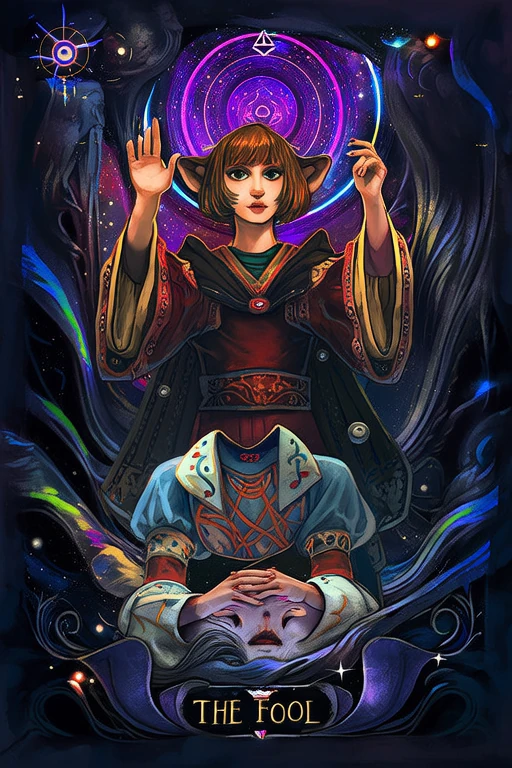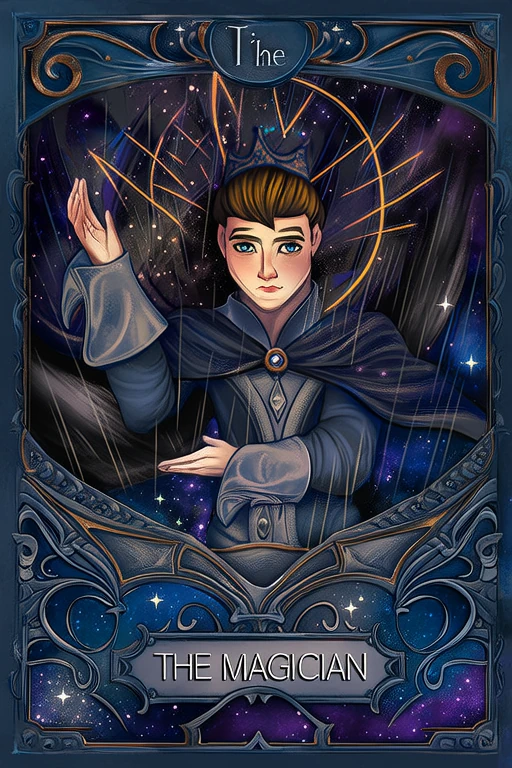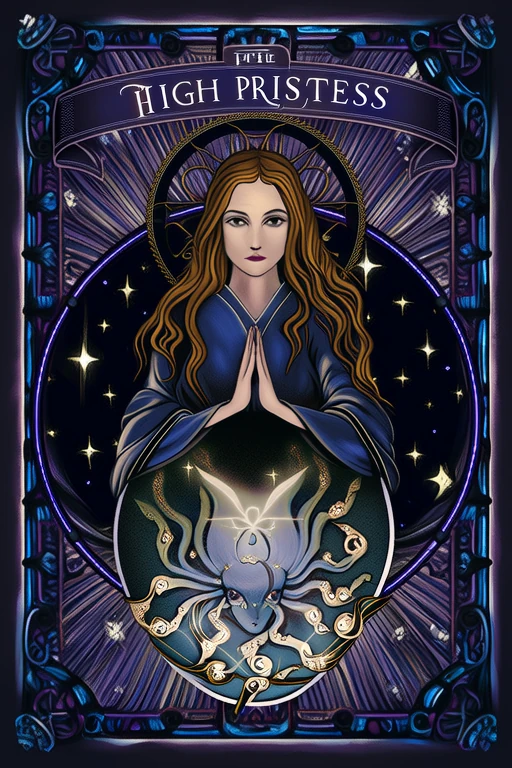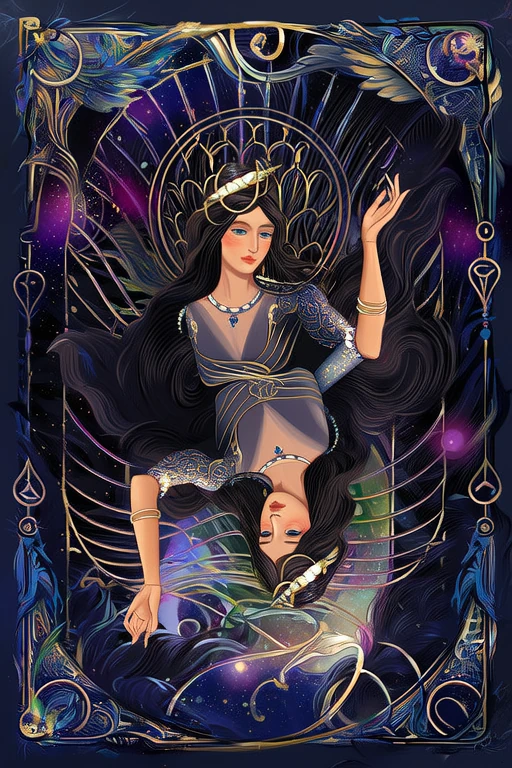
Temperance
Discover the deep meaning of Temperance with our free AI-powered tarot interpretation. Get instant, accurate readings based on advanced tarot knowledge.
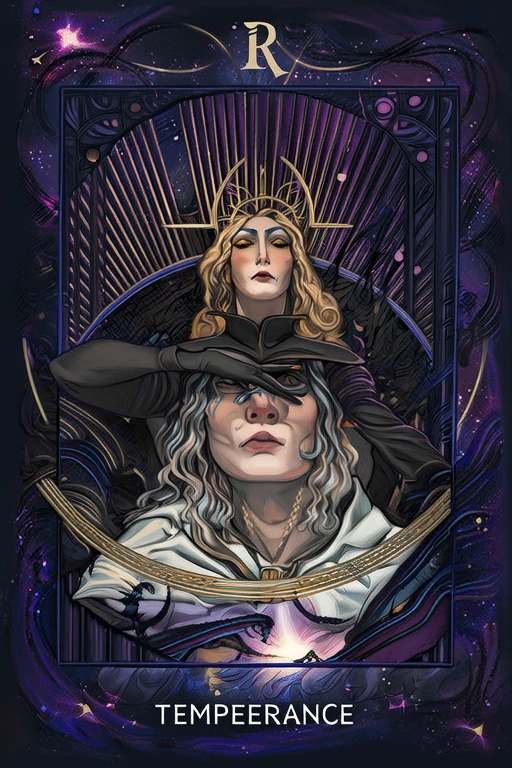
Keywords
Upright Meaning
Balance, moderation, patience, purpose, meaning
Reversed Meaning
Imbalance, excess, self-healing, re-alignment
Full Interpretation
Temperance represents balance, moderation, and finding harmony in life.
In-Depth Analysis
📜 Historical Background
The Temperance card, numbered XIV in the Major Arcana of the Tarot, has deep historical roots that trace back to the early development of tarot in 15th-century Europe. Originally used for playing games, tarot decks evolved into tools for divination and spiritual insight during the 18th and 19th centuries, particularly through the efforts of occultists like Eliphas Lévi and the Hermetic Order of the Golden Dawn. The origins of the Temperance card itself can be linked to earlier allegorical and religious imagery, particularly from Christian and classical traditions.
In early tarot decks, such as the Visconti-Sforza and Marseille decks, Temperance was often depicted as an angelic figure pouring liquid between two vessels—symbolizing balance, moderation, and transformation. The imagery draws from the concept of alchemy, where the process of transmuting base metals into gold mirrored the spiritual evolution of the soul. The act of pouring liquid between two cups or vessels became a powerful metaphor for the harmonization of opposites—such as body and spirit, emotion and reason, or the material and the divine.
Over time, the symbolism of Temperance evolved to reflect changing philosophical and spiritual paradigms. In Renaissance art, the card was associated with the virtue of temperance, one of the four cardinal virtues alongside prudence, justice, and fortitude. These virtues were seen as essential for a balanced and moral life. The card’s association with moderation and self-control made it a symbol of inner harmony and personal discipline.
Different tarot decks have interpreted Temperance in unique ways. The Rider-Waite-Smith deck, created in 1909 by A.E. Waite and illustrated by Pamela Colman Smith, presents a serene angel with one foot on land and one in water, pouring water between two golden cups. This imagery emphasizes the blending of the earthly and the spiritual, the conscious and the unconscious. Other decks, such as the Thoth Tarot by Aleister Crowley and Lady Frieda Harris, incorporate more esoteric and astrological symbolism, linking Temperance with the zodiac sign Sagittarius and the element of Fire.
Culturally, the Temperance card has been embraced across various spiritual traditions. In some interpretations, it reflects Buddhist principles of the Middle Way—avoiding extremes and seeking balance. In modern Wiccan and New Age practices, the card represents healing, transformation, and the alignment of energies. Its enduring presence across cultures and eras attests to the universal human quest for harmony, self-mastery, and spiritual growth.
Symbolism & Imagery
The Temperance card is rich in symbolic meaning, with each element of its imagery contributing to a deeper understanding of its role in the tarot. At the heart of the card is the figure of an angel or divine being, often depicted with wings to symbolize spiritual guidance and higher consciousness. The angel stands with one foot on land and one in water, representing the union of the physical and emotional realms, the conscious and the unconscious, and the material and the spiritual.
The act of pouring liquid between two vessels—often depicted as golden cups—is central to the card’s symbolism. This gesture signifies the blending of opposites and the process of transformation. The liquid may represent the elixir of life, the philosopher’s stone in alchemical terms, or the flow of divine energy. It suggests that true mastery comes not from extremes, but from finding balance and integrating different aspects of the self.
Colors play a significant role in the interpretation of Temperance. Gold, often used for the cups, symbolizes enlightenment, spiritual wealth, and the refinement of the soul. The blue of the angel’s robe represents calm, wisdom, and the higher mind. The verdant green landscape in the background speaks to growth, renewal, and the fertile ground of spiritual development. These hues collectively convey a sense of peace, harmony, and inner alignment.
Numerologically, the number 14 resonates with Temperance. In tarot numerology, this number is associated with patience, adaptability, and the need for moderation. It encourages individuals to find balance through trial and error, learning from experience rather than rushing toward extremes. The number also suggests a journey of self-discovery and the importance of maintaining equilibrium in all aspects of life.
Across different cultures, the interpretation of Temperance varies slightly. In Western esoteric traditions, it is often linked to alchemical transformation and spiritual purification. In Eastern philosophies, it may reflect the Taoist principle of balance and the Buddhist Middle Way. In Jungian psychology, Temperance aligns with the integration of the shadow and the realization of the Self.
When the Temperance card appears upright in a reading, it signals a time of healing, patience, and moderation. It encourages the querent to find balance in their life, whether emotionally, physically, or spiritually. It may also suggest a need to blend different elements of a situation to achieve harmony.
Reversed, Temperance may indicate imbalance, impatience, or a refusal to integrate opposing forces. It could point to emotional turmoil, physical illness, or spiritual disconnection. This orientation often serves as a reminder to slow down, reassess priorities, and seek inner alignment.
Temperance is closely connected to other cards in the Major Arcana. It follows the destructive force of the Tower (XIII), offering a path to healing and reconstruction. It precedes the Devil (XV), reminding the querent that moderation is essential to avoid falling into temptation or addiction. Together, these cards form a narrative arc of transformation, warning, and redemption.
Psychological Insights
From a psychological perspective, the Temperance card resonates deeply with Carl Jung’s concept of individuation—the process of integrating the conscious and unconscious aspects of the psyche to achieve wholeness. Jungian archetypes such as the Wise Old Man or the Mediator are reflected in the angelic figure of Temperance, representing the higher self or the guiding force that helps individuals navigate internal conflicts and achieve inner harmony.
In modern life, Temperance serves as a reminder of the importance of balance and self-awareness. In a world that often glorifies extremes—whether in work, relationships, or consumption—the card encourages moderation, patience, and thoughtful decision-making. It is particularly relevant for those facing transitions, healing from past trauma, or seeking personal growth. Temperance advises a measured approach, emphasizing that lasting change comes through steady progress rather than sudden upheaval.
For personal development, the Temperance card is a call to integrate different parts of the self—rational and emotional, physical and spiritual. It encourages reflection on how we manage stress, relationships, and personal goals. By promoting self-awareness, Temperance supports individuals in recognizing when they are out of alignment and how to restore balance through mindfulness, self-care, and intentional living.
In therapeutic and counseling settings, the Temperance card can be a powerful tool for guiding clients toward emotional regulation and holistic healing. Counselors and life coaches may use the card to explore themes of moderation, recovery, and sustainable change. It is especially useful in discussions around addiction, burnout, or emotional instability, offering a framework for understanding the need for balance and self-compassion.
Modern spiritual practices also embrace Temperance as a symbol of transformation and alignment. In meditation, visualization, or energy healing, the card can serve as a focal point for cultivating inner peace and clarity. It is often used in rituals related to healing, purification, and spiritual growth, reminding practitioners that true enlightenment arises from the integration of all aspects of the self. Whether used in tarot readings, affirmations, or guided journeys, Temperance continues to offer profound insights into the path of self-mastery and spiritual evolution.
Correspondences
The Temperance card is richly connected to various esoteric and metaphysical systems, offering a multidimensional framework for understanding its influence. Astrologically, Temperance is associated with the planet Jupiter and the zodiac sign Sagittarius. Jupiter, the great benefic, brings expansion, wisdom, and optimism, while Sagittarius embodies exploration, philosophy, and the quest for truth. Together, they reinforce Temperance’s message of growth through balance, encouraging a broad-minded and compassionate approach to life’s challenges.
Gemstones and crystals associated with Temperance include Aquamarine, which promotes clarity and emotional healing; Lapis Lazuli, linked to wisdom and self-awareness; and Amethyst, known for spiritual balance and calming energy. These stones can be used in meditation or worn as talismans to enhance the card’s themes of harmony and transformation.
Herbs and essential oils connected to Temperance include Lavender for calming and balance, Chamomile for soothing anxiety, and Frankincense for spiritual clarity. These natural elements can be incorporated into rituals or aromatherapy practices to support emotional equilibrium and inner peace.
Elementally, Temperance corresponds to Water and Fire, representing the blending of emotional depth and spiritual inspiration. This duality reflects the card’s core message of integrating opposites to achieve harmony. Seasonally, Temperance aligns with the transition periods—equinoxes and solstices—where balance between light and dark, warmth and coolness, is most evident.
In terms of energy work, Temperance is closely tied to the Throat Chakra (Vishuddha), which governs communication, self-expression, and truth. By aligning this chakra, Temperance encourages honest dialogue with oneself and others, fostering clarity and authenticity.
Numerologically, the number 14 reduces to 5 (1 + 4 = 5), which signifies change, freedom, and adaptability. This reinforces Temperance’s message of navigating life’s transitions with grace and balance, reminding us that true transformation comes not from extremes but from mindful integration.
❓ Frequently Asked Questions
**What does the Temperance card mean in a love reading?** In love readings, Temperance often indicates a need for balance and patience in relationships. It may suggest healing past wounds, fostering emotional harmony, or taking a moderate approach to conflicts. If reversed, it could point to communication issues or emotional extremes that need addressing.
**Does Temperance always mean healing?** While Temperance is strongly associated with healing—particularly emotional or spiritual—it also encompasses themes of balance, transformation, and integration. It doesn’t guarantee a quick fix but rather suggests that healing is possible through patience, moderation, and inner alignment.
**Is Temperance a yes or no card?** Temperance is generally a 'yes' card when the question involves long-term decisions, healing, or balancing different elements. However, it often comes with the caveat of needing time, effort, and moderation to achieve the desired outcome.
**What does Temperance mean in a career reading?** In career contexts, Temperance advises a balanced approach to work and professional development. It may suggest collaboration, patience in decision-making, or the need to integrate different skills or perspectives. It can also indicate a period of transition or learning that requires adaptability.
**How should beginners interpret Temperance?** Beginners may find Temperance challenging because of its abstract nature. A common misconception is that it guarantees immediate success or healing. Clarify that Temperance is about process, not instant results—it emphasizes the journey toward balance rather than the destination.
**What spreads work well with Temperance?** Spreads that explore transformation, balance, or integration are ideal for Temperance. Try a three-card spread: 'Past – Present – Future' to show how balance has evolved or needs to evolve. The Celtic Cross also works well, especially if Temperance appears in the 'Challenge' or 'Outcome' positions.
**How does Temperance interact with other cards?** Temperance softens the impact of more challenging cards like the Tower or the Devil by offering a path forward through balance and moderation. When paired with the Lovers, it may indicate a relationship that requires emotional maturity. With the Star, it enhances hope and healing.
**What advice should I give when Temperance appears?** Encourage the querent to take a step back, assess their situation with patience, and look for ways to integrate different aspects of their life. Suggest practices like journaling, meditation, or therapy to support inner alignment and emotional healing.
Practical Readings
Love Reading – Free • Online • AI • Instant • Accurate
In love, Temperance upright: Balance, moderation, patience, purpose, meaning. Reversed: Imbalance, excess, self-healing, re-alignment.
Career Reading – Free • Online • AI • Instant • Accurate
For career, Temperance upright: Balance, moderation, patience, purpose, meaning. Reversed: Imbalance, excess, self-healing, re-alignment.
Yes‑No Reading – Free • Online • AI • Instant • Accurate
As a quick yes‑no: upright tends toward “yes”, reversed leans “no”—interpret within your question’s context.
FAQ
What does Temperance mean in tarot?
Temperance represents balance, moderation, patience, purpose, meaning. This card encourages Temperance represents balance, moderation, and finding harmony in life.
What is Temperance reversed meaning?
When Temperance appears reversed, it signifies imbalance, excess, self-healing, re-alignment. Consider areas that may require adjustment or release.
Is Temperance a positive card?
Temperance is generally considered a neutral to positive card, representing balance, moderation, patience, purpose, meaning.
What should I do if I draw Temperance?
If you draw Temperance, focus on balance, moderation, patience. Align actions with the card’s upright energy.
How do I interpret Temperance in a love reading?
In love readings, Temperance suggests balance, moderation, patience, purpose, meaning in relationships. Consider how balance and moderation apply to your situation.
What does Temperance mean in a love reading?
In love, Temperance points to balance, moderation, patience, purpose, meaning when upright and imbalance, excess, self-healing, re-alignment reversed. Reflect on relational balance & authenticity.
How is Temperance interpreted in career?
For career, Temperance upright highlights balance, moderation, patience, purpose, meaning while reversed warns of imbalance, excess, self-healing, re-alignment—adjust planning & execution.
What is the financial meaning of Temperance?
Financially, Temperance suggests balance, moderation, patience, purpose, meaning potential; reversed indicates imbalance, excess, self-healing, re-alignment—use prudent pacing.
Is Temperance a yes or no card?
Temperance is generally a context-dependent when upright; reversed leans toward hesitation or NO—apply to the nuance of your question.
References
References
- Encyclopaedia Britannica – Tarot
Historical overview and cultural context of tarot cards.
- Wikipedia – Tarot
General reference on tarot history, structure, and usage.
- Biddy Tarot – Tarot Card Meanings
Widely cited interpretations and learning resources.
- Labyrinthos – Tarot Card Meanings
Educational articles on major and minor arcana.
